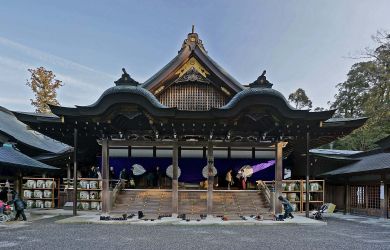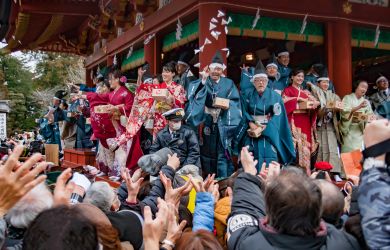
Originally published on metropolis.co.jp on December 2012

It’s been unkindly referred to as “o-retchi” in some circles, so let’s face it—osechi ryori is not everyone’s cup of green tea. What to do if you’re one of those in the blergh camp? Metropolis investigates additions and alternatives to the Japanese New Year menu.
Solution 1: Order in
Whether you’re an atrocious cook, you’re pressed for time or have always wanted to eat at a fancy schmancy restaurant but never gotten around to it, take-out osechi is the answer for you. Whether ordering in from your local supermarket, Natural House (for the organic foodies among us) or one of Tokyo’s major department stores, there’s a jubako, or specially prepared box set, for every taste and budget.
If money is no object, why not splurge and order osechi from one of Tokyo’s top hotels or restaurants? Internationally renowned chef Nobu Matsuhisa may have garnered international plaudits for his signature black cod in miso and his blending of Japanese cuisine with South American ingredients, but a ¥50,400 jubako from Nobu Tokyo contains seemingly more traditional fare. A similarly priced ¥52,500 jubako from Toutouan is presented within a stalk of green bamboo and adheres to the aesthetics of the restaurant, which is on the premises of an old family mansion passed down since the Edo Period.
Not all jubako are as costly. Prices generally range from ¥10,000 and it’s usually possible to mix and individually select some items to make the meal more your own, or you can order mini osechi instead.
A number of stores this year are also promoting ingredients and dishes from the Tohoku region; Takashimaya’s Higashi Nihon Gambaro Osechi (¥21,000) highlights regional delicacies such as Miyagi Prefecture oysters in olive oil and buri (yellowtail) teriyaki from Aomori Prefecture.
Solution 2: Look to regional fare
Perhaps one of the other prefectures holds the key to your osechi mojo. The opportunity to explore Japan’s regional culinary prowess is readily available through the bowl of soup served for breakfast on New Year’s Day: ozoni. Ingredients vary widely, but a piece of omochi (rice cakes made of steamed, then pounded glutinous rice) is almost always included. In eastern Japan omochi is cut into squares, while in western Japan round omochi is more common. Some areas add sweet red bean-paste, while others add miso, shrimp, duck, oysters and various kinds of vegetables.
But there are other dishes that feature prominently in local osechi repertoire. When researching her charity e-book on Tohoku cuisine, Kibo: Brimming With Hope, Elizabeth Andoh was astonished to learn that squid jerky and carrot strips (pictured; see recipe online) was the one, non-negotiable dish prominent in many a local jubako.
Solution 3: Add a personal touch
In keeping with the tradition of featuring red and white foodstuffs—said to represent the lucky colors of the Japanese flag—interpret some of your own foods into the jubako. Try a bocconcini and tomato caprese-style salad, or for a real touch of fusion, replace the cheese with artisanal tofu. Smoked salmon white bread sandwiches, crusts removed, English style, is another easy option.





